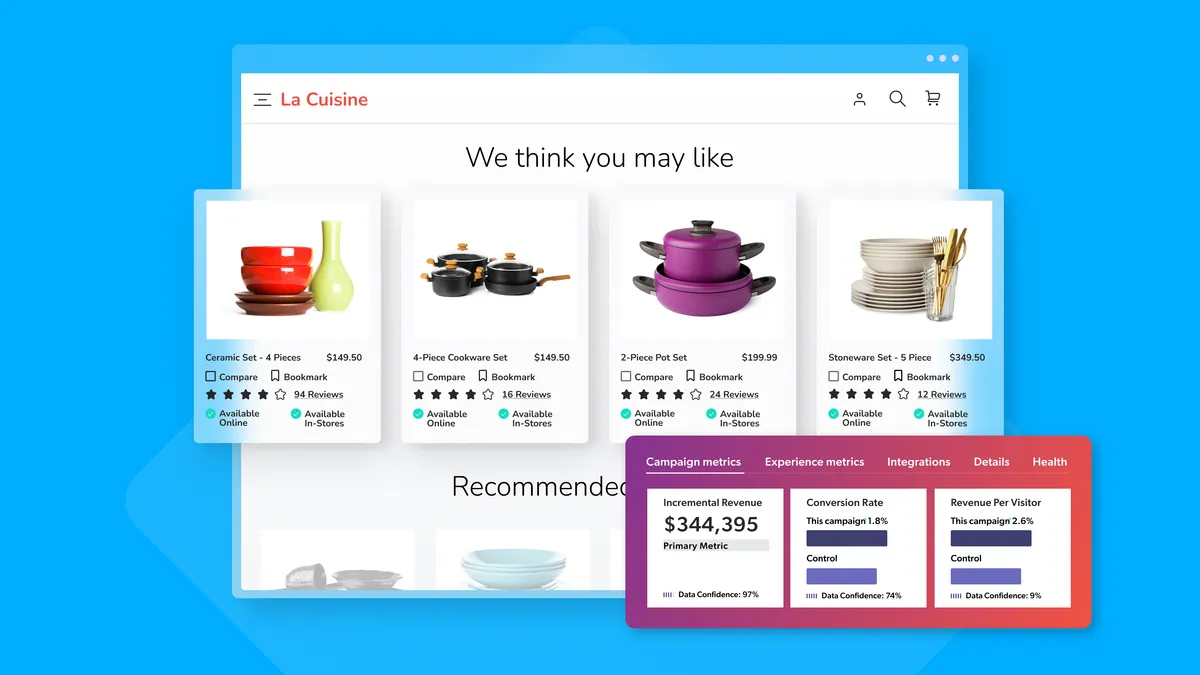AI and machine learning touch every industry today, but it's sometimes unclear how they improve the bottom line. In addition to automating tedious processes or helping you discover trends, can this tech boost sales and margins?
The answer is absolutely "yes." Here are three ways we're seeing businesses harness the best of AI to achieve significant gains.
1. One-to-one personalization
AI reduces the reliance on marketing personas - which aren’t very good predictors of what customers will buy. These more traditional solutions show and recommend the same products to everyone upon first visiting your site and then try to fill in the gaps with any historical data you've collected on that consumer.
This requires them to log in and with the majority of ecommerce visits happening anonymously, you're missing an opportunity to use real-time data to offer completely customized product recommendations. By focusing on people – not personas – you meet customers where they are at the moment they engage with your brand, and AI powers this functionality.
2. Profits, not popularity
Another risk to showing the same products to every shopper that comes to your site is something called the "popularity vicious cycle." Traditional product recommendation models rank products and make recommendations based on popularity, typically based on the number of clicks or cart adds.
What’s the harm in this? In addition to possibly alienating your customers when you repeatedly show them products that aren't a fit, you banish your least popular items to the corner of your digital storefront, dooming them not to sell. Suppose you're like many ecommerce retailers that use markdowns to get rid of these slow-moving SKUs. In that case, you're now losing a significant margin on perfectly-good items that just needed some exposure to find the customer that would have purchased them at full price.
What’s worse, these deeply-discounted products soon become popular based on their markdown percentage. They find themselves in the popular products category shown to all new visitors when they come to your site.
This perpetuates a cycle of good products being marked down, becoming popular and forcing you to continually markdown items at a loss. It may even encourage your customers to wait until something gets marked down to finally buy.
Next generation Machine Learnings can avoid this cycle by showing your customers items that are personalized to them and profitable for you. Old school approaches fall prey to popularity traps. It’s a win-win and changes in real-time based on the actions customers take while browsing your site. Customers feel seen and reward you by purchasing things that resonate with them – at full price without returns. If they find the experience enjoyable, they'll be back for those personalized products again and again, without the intention of finding the lowest-cost or most marked-down items.
You go from being a bargain bin to a profitable premium seller that anticipates and meets their needs every time.
3. Smarter merchandising
Putting the right product on the shelf (or, in this case, in digital displays) is a dedicated profession, with merchandisers spending a lot of time figuring out which products should get the best placement. Traditional solutions require a lot of hand-holding and rules to boost those products with the highest margin or seasonal items. As sales cycles come and go, inventory needs to be “swapped out” to be more front-facing when it matters most.
What if your merchants could take on a more strategic role, allowing AI to take over some of the manual tasks?
Merchants could spend more time testing theories to see what tactics can drive up profits and margins. For example, at a large footwear retailer, merchandisers tested various product recommendation scenarios to see what worked best. A shopper with two pairs of high heels in her cart would typically be recommended more heels in the same size. When merchandisers tested showing children’s shoes or men’s shoes as an alternative, they saw a shocking increase in additional purchases.
With traditional thinking, you’ve missed out on an opportunity to increase her cart size, simply because you used old, impersonalized merchandising models. AI can reduce these missed opportunities while freeing up your actual merchandisers to think big-picture about your overall strategy.
Bottom line:
The more data you feed into your ai-powered search and recommendation engine - the greater the yield. Whether it’s margin data helping you choose the right product to recommend, or affinity data on our customers (or both) the more data you inject into your engine the better the shopping experience.
And with today’s AI capabilities, even first-time, anonymous shoppers can feel catered to without you needing to sacrifice the margins of your top products.










